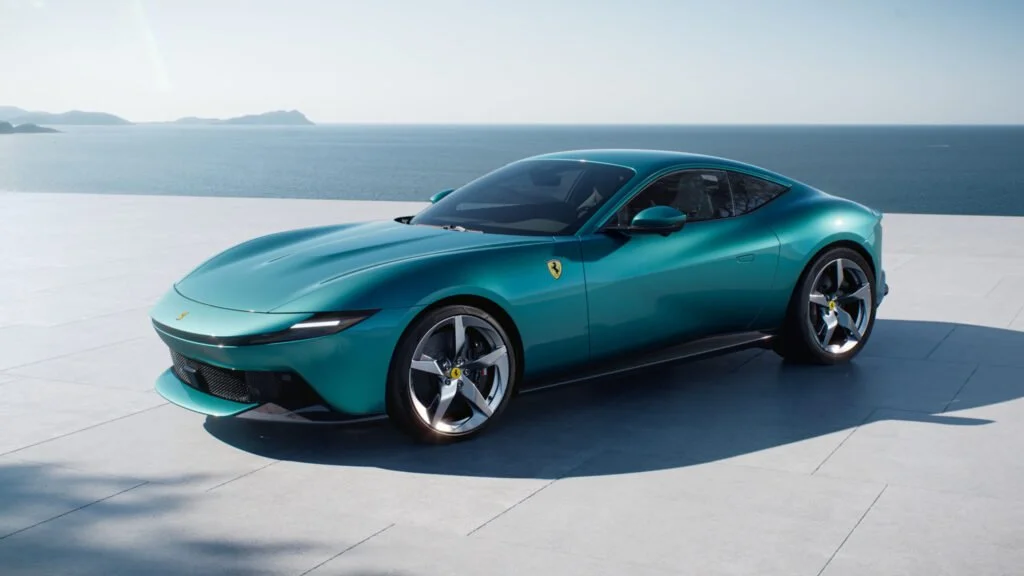MEET THE AMALFI: Has The Ferrari Roma been Improved?
Ferrari’s recent products have certainly been….different. Not controversial. Not necessarily below-par. Just different. Whether you like the Italian icon’s current trajectory or not; the changes have been undeniable. For us, we aren’t entirely sure what to think. Of course, recent months and years have seen some indisputably brilliant cars be revealed to the world, such as the beautiful 12 Cilindri, SF90 XX and 296, but other staples have simply missed the mark. The F80, whilst a strong concept, seems to be confused and overly complex. The Purosangue is an odd cross-breed with a ludicrous price tag and a name that requires a fair bit of brain power to pronounce. And the Roma is just….meh.
The latter really did not interest many people. While it was a handsome looking car, it was tame and borderline dull, especially when owners decided they would cleverly choose a shade of concrete.
It didn’t excite. It wasn’t particularly desirable.
Surprisingly, Ferrari acknowledged some of their mistakes, and revealed this. The Ferrari Amalfi.



In what could only be seen as a desperate attempt to crawl away from the ashamed Roma name, the Amalfi does make improvements over its predecessor. Whilst they certainly aren’t revolutionary changes, they are steady improvements, and much needed ones at that.
The most notable change? Buttons are back. That’s right - after backlash over the touch-sensitive controls present on the overly-busy steering wheel, Ferrari has reintroduced various tactile buttons, including the traditional engine ignition/start button. Oh, the joys!
The Roma’s 3.9 litre twin-turbo V8 engine remains, with the Amalfi only seeing a power increase of 20hp, resulting in a total power output of 631hp. 0-100km/h in 3.3 seconds is quite impressive, however it must be wondered if Ferrari’s latest tourer will be able to stand up for itself against the capabilities of its rivals.
The familiar 8-speed twin clutch gearbox out of the Roma also stays, with power sent exclusively to the rear wheels. Ferrari claims that the exhaust has been tweaked and the camshafts have been lightened to result in a more rev-happy V8 - very much needed in comparison to the Amalfi’s predecessor.
Outside, the Amalfi appears to merely be a facelifted version of the Roma that came before it. It retains similar body lines and precedents, but implements Ferrari’s modern approach to lights and minimalistic body work. According to Ferrari, only glass is carried over from its predecessor, with design inspiration from the Purosangue and 12 Cilindri instead. It is certainly a very tidy and polite-looking car, with an aura of somewhat elegance and class. Does that mean its visual appearance is too safe? Perhaps. But that isn’t an issue. The removal of the Roma’s front ventilated bumper was a necessary improvement, and assists with the overall fluidity of the Amalfi.
The Amalfi does do a brilliant job in blending traditionalism with innovation; a concept many brands are currently struggling with. The sleek, eloquent panels curve around the muscular third quarter, which becomes a sharp and slanted edge as you reach the rear. The slim headlights are reminiscent of the 12 Cilindri - a design which took the world a while to get used to, however its minimalistic style does come with a sense of seductiveness. Yes, the front is polite and subdued, but feels as though a sinister snarl is hidden beneath. Let’s hope this same idea comes with its driving experience.
While the return of the tactile buttons is a pleasant surprise, the Amalfi’s cockpit does remain largely digital. A new 10.25 inch touchscreen and passenger display hog the dashboard, but the quality materials and simplistic gear selector forgive this.
With the Amalfi, Ferrari has certainly made much needed improvements to its failed Roma, however only time will tell if a market is ready to dive into the reimagined entry level model of the prancing horse lineage.
First cars are expected to arrive to customers in early 2026, with prices expected to start at around $430,000AUD before on-roads.
